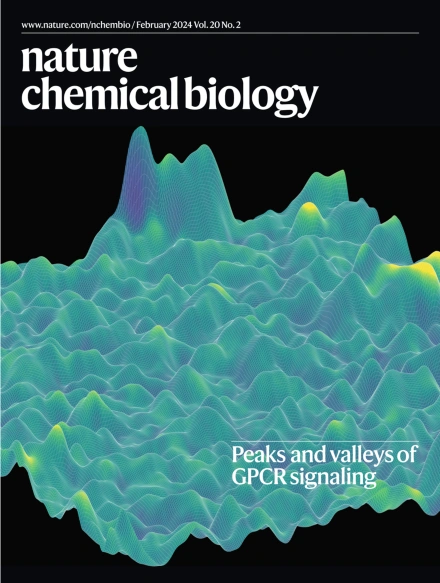Co-evolution-based prediction of metal-binding sites in proteomes by machine learning
IF 13.7
1区 生物学
Q1 BIOCHEMISTRY & MOLECULAR BIOLOGY
引用次数: 3
Abstract
Metal ions have various important biological roles in proteins, including structural maintenance, molecular recognition and catalysis. Previous methods of predicting metal-binding sites in proteomes were based on either sequence or structural motifs. Here we developed a co-evolution-based pipeline named ‘MetalNetʼ to systematically predict metal-binding sites in proteomes. We applied MetalNet to proteomes of four representative prokaryotic species and predicted 4,849 potential metalloproteins, which substantially expands the currently annotated metalloproteomes. We biochemically and structurally validated previously unannotated metal-binding sites in several proteins, including apo-citrate lyase phosphoribosyl-dephospho-CoA transferase citX, an Escherichia coli enzyme lacking structural or sequence homology to any known metalloprotein (Protein Data Bank (PDB) codes: 7DCM and 7DCN ). MetalNet also successfully recapitulated all known zinc-binding sites from the human spliceosome complex. The pipeline of MetalNet provides a unique and enabling tool for interrogating the hidden metalloproteome and studying metal biology. A machine-learning method called MetalNet was developed to systematically predict metal-binding sites in proteomes using sequence co-evolution, which enabled the identification of new metalloproteins.

基于协同进化的机器学习预测蛋白质组中的金属结合位点
金属离子在蛋白质中具有各种重要的生物学作用,包括结构维持、分子识别和催化作用。以往预测蛋白质组中金属结合位点的方法都是基于序列或结构模式。在这里,我们开发了一个基于协同进化的管道,名为 "MetalNet",用于系统预测蛋白质组中的金属结合位点。我们将 MetalNet 应用于四个代表性原核生物物种的蛋白质组,预测出了 4849 个潜在的金属蛋白,大大扩展了目前已注释的金属蛋白质组。我们从生物化学和结构上验证了几个蛋白质中以前未注明的金属结合位点,其中包括大肠杆菌中一种与任何已知金属蛋白(蛋白质数据库(PDB)代码:7DCM 和 7DCN )缺乏结构或序列同源性的酶--载脂蛋白柠檬酸酶磷酸核糖基-去磷酸-CoA 转移酶 citX。MetalNet 还成功重现了人类剪接体复合物中所有已知的锌结合位点。MetalNet管道为研究隐藏的金属蛋白质组和金属生物学提供了一种独特的工具。我们开发了一种名为MetalNet的机器学习方法,利用序列协同进化系统地预测蛋白质组中的金属结合位点,从而鉴定出新的金属蛋白。
本文章由计算机程序翻译,如有差异,请以英文原文为准。
求助全文
约1分钟内获得全文
求助全文
来源期刊

Nature chemical biology
生物-生化与分子生物学
CiteScore
23.90
自引率
1.40%
发文量
238
审稿时长
12 months
期刊介绍:
Nature Chemical Biology stands as an esteemed international monthly journal, offering a prominent platform for the chemical biology community to showcase top-tier original research and commentary. Operating at the crossroads of chemistry, biology, and related disciplines, chemical biology utilizes scientific ideas and approaches to comprehend and manipulate biological systems with molecular precision.
The journal embraces contributions from the growing community of chemical biologists, encompassing insights from chemists applying principles and tools to biological inquiries and biologists striving to comprehend and control molecular-level biological processes. We prioritize studies unveiling significant conceptual or practical advancements in areas where chemistry and biology intersect, emphasizing basic research, especially those reporting novel chemical or biological tools and offering profound molecular-level insights into underlying biological mechanisms.
Nature Chemical Biology also welcomes manuscripts describing applied molecular studies at the chemistry-biology interface due to the broad utility of chemical biology approaches in manipulating or engineering biological systems. Irrespective of scientific focus, we actively seek submissions that creatively blend chemistry and biology, particularly those providing substantial conceptual or methodological breakthroughs with the potential to open innovative research avenues. The journal maintains a robust and impartial review process, emphasizing thorough chemical and biological characterization.
 求助内容:
求助内容: 应助结果提醒方式:
应助结果提醒方式:


